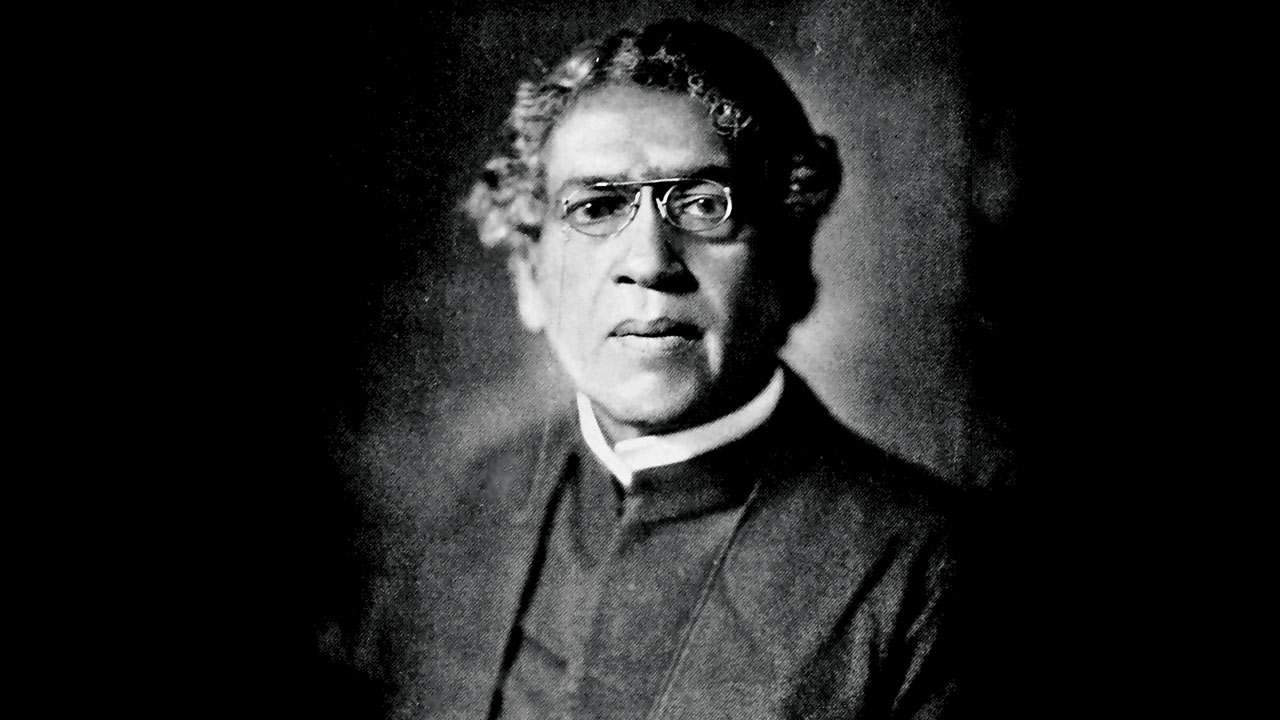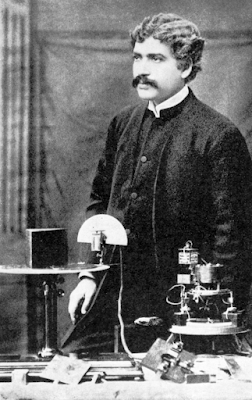Giants Admired #1 : Plant-loving Polymath
I always had a flair
for story of scientists...I always wondered why very few Indian scientists were
actually known widely. One of the few Indian scientists' names that crawl into
our textbooks is Sir Jagadish Chandra Bose.The. Indian. Botanist. Sure, he
found out evidence for life in plants using a crescograph, but actually, he
MADE the crescograph. He was basically , a physicist...
BORN A KING IN MYEMENSINGH
Jagadish Chandra Bose was born on 30 November, 1858 at Mymensingh, now in Bangladesh. He was raised in a home committed to Indian values and culture. He got his elementary education from a vernacular school, because his father believed that Bose should learn his own mother tongue, Bengali, before studying a foreign language like English. Bose attended Cambridge after studying physics at Calcutta University. He returned to India in 1884 after completing a B.Sc. degree from Cambridge University.INDIA'S OWN POLYMATH
Jagadish Chandra Bose was
a polymath whose research has extensively contributed to the fields of botany,
physics, archaeology and radio science. Bose is considered to be the first
modern scientist of India for the recognition he received from the Royal
Institution.
He is credited to have laid the foundations of experimental
science in India and was a pioneer in the area of microwave optics technology.
He designed a galena receiver (earliest example of a lead sulphide
photo conducting device). Along with being a scientist, he was also a talented writer who set the precedence for Bengali science fiction writing.
Bose contrived a very sophisticated instrument called Crescograph which could record and observe the minute responses because of external stimulants. It was capable of magnifying the motion of plant tissues to about 10,000 times(!) of their actual size, which found many similarities between plants and other living organisms.
photo conducting device). Along with being a scientist, he was also a talented writer who set the precedence for Bengali science fiction writing.
Bose contrived a very sophisticated instrument called Crescograph which could record and observe the minute responses because of external stimulants. It was capable of magnifying the motion of plant tissues to about 10,000 times(!) of their actual size, which found many similarities between plants and other living organisms.
THE DEMONSTRATION
The central hall of the Royal Society in London was jam-packed with famous scientists on May 10, 1901. Everyone seemed to be curious to know how Bose’s experiment will demonstrate that plants have feelings like other living beings and humans. Bose chose a plant whose mots were cautiously dipped up to its stem in a vessel holding the bromide solution. The salts of hydrobromic acid are considered a poison. He plugged in the instrument with the plant and viewed the lighted spot on a screen showing the movements of the plant, as its pulse beat, and the spot began to and fro movement similar to a pendulum. Within minutes, the spot vibrated in a violent manner and finally came to an abrupt stop. The whole thing was almost like a poisoned rat fighting against death. The plant had died due to the exposure to the poisonous bromide solution.
The event was greeted with much appreciation, however some physiologists were
not content, and considered Bose as an intruder(because he was basically a
physicist, that too an Indian physicist). They harshly knocked the experiment
but Bose did not give up and was quite confident about his findings.

Using the Crescograph, he further researched the response of the plants to fertilizers, light rays and wireless waves. The instrument received widespread acclaim, particularly from the Path Congress of Science in 1900. Many physiologists also supported his findings later on, using more advanced instruments.
Bose was the first to use a semiconductor junction to detect radio waves, and he invented various now-commonplace microwave components. In 1954, Pearson and Brattain gave priority to Bose for the use of a semi-conducting crystal as a detector of radio waves. In fact, further work at millimetre wavelengths was almost non-existent for the following 50 years. In 1897, Bose described to the Royal Institution in London his research carried out in Kolkata at millimetre wavelengths. He used waveguides, horn antennas, dielectric lenses, various polarisers and even semiconductors at frequencies as high as 60 GHz.Much of his original equipment is still in existence, especially at the Bose Institute in Kolkata. A 1.3 mm multi-beam receiver now in use on the NRAO 12 Metre Telescope, Arizona, US, incorporates concepts from his original 1897 papers.
Sir Nevill Mott, Nobel Laureate in 1977 for his own contributions to solid-state electronics, remarked that "J.C. Bose was at least 60 years ahead of his time. In fact, he had anticipated the existence of P-type and N-type semiconductors."

MOVING ON...
Using the Crescograph, he further researched the response of the plants to fertilizers, light rays and wireless waves. The instrument received widespread acclaim, particularly from the Path Congress of Science in 1900. Many physiologists also supported his findings later on, using more advanced instruments.
THE ACTUAL INVENTION OF RADIO
He also extensively researched the behaviour of radiowaves.
Bose devised
another instrument called ‘Coherer’, for detecting the radiowaves.
He carried out experiments involving refraction, diffraction and polarization. It would be right to call him as the inventor of wireless telegraphy.
He carried out experiments involving refraction, diffraction and polarization. It would be right to call him as the inventor of wireless telegraphy.
In 1895, a year
before Guglielmo Marconi patented this invention, Bose had demonstrated its
functioning in public, but he was not interested in patenting his work.
Bose
ignited gunpowder and rang a bell at a distance using electromagnetic
waves,confirming that communication signals can be sent without using wires. He
sent and received radio waves over distance but did not commercially exploit
this achievement. Bose would continue with his research and made other
contributions to the development of radio.Bose was sometimes criticised as
unpractical for making no profit from his inventions.
SEMICONDUCTORS, ANYONE?
Bose was the first to use a semiconductor junction to detect radio waves, and he invented various now-commonplace microwave components. In 1954, Pearson and Brattain gave priority to Bose for the use of a semi-conducting crystal as a detector of radio waves. In fact, further work at millimetre wavelengths was almost non-existent for the following 50 years. In 1897, Bose described to the Royal Institution in London his research carried out in Kolkata at millimetre wavelengths. He used waveguides, horn antennas, dielectric lenses, various polarisers and even semiconductors at frequencies as high as 60 GHz.Much of his original equipment is still in existence, especially at the Bose Institute in Kolkata. A 1.3 mm multi-beam receiver now in use on the NRAO 12 Metre Telescope, Arizona, US, incorporates concepts from his original 1897 papers.
Sir Nevill Mott, Nobel Laureate in 1977 for his own contributions to solid-state electronics, remarked that "J.C. Bose was at least 60 years ahead of his time. In fact, he had anticipated the existence of P-type and N-type semiconductors."
SSV

Comments
Post a Comment